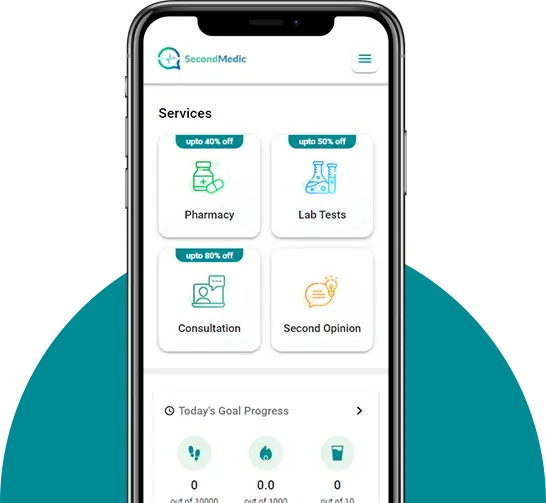- Published on: Jul 02, 2021
- 4 minute read
- By: Dr Rachana Choudhary
1st Trimester Sleep : Best Positions For Blissful Pregnancy
Congratulations on entering the exciting first trimester of your pregnancy journey! As you navigate through the whirlwind of emotions and physical changes, one crucial aspect to focus on is sleep.
How can you ensure peaceful nights amidst morning sickness, discomfort, and emotional ups and downs? Let's explore the best sleep positions for the first trimester to help you get the rest you need.
Understanding the importance of good sleep during this phase is key. The balance of joy and challenges in the first trimester can affect your rest, so it's important to approach it with care.
Let's uncover the secrets to finding comfortable sleep positions, ensuring serene and restful nights during this special time.
Understanding Morning Sickness and Its Impact
The initial weeks of pregnancy often bring along the unwelcome visitor of morning sickness. This common phenomenon, characterized by nausea and occasional vomiting, can disrupt your daily routine and impede a good night's sleep. However, rest assured that you're not alone in this experience. To alleviate the discomfort, consider implementing simple yet effective tips to navigate through this challenging phase with greater ease.
-
Elevate Your Head for Acid Reflux Relief: Imagine heartburn as a mischievous imp bubbling up discomfort. Sleeping with your head and upper body slightly elevated (think extra pillows or a wedge) acts as a barrier, preventing stomach acid from creeping up your esophagus and causing that burning sensation.
-
Nighttime Nibbles to Quell Nausea: An empty stomach can be a breeding ground for nausea. Keep a stash of bland, easily digestible snacks like crackers or dry toast by your bedside table. Having a few bites before bed can help settle your stomach and prevent nausea from waking you up.
-
Small and Frequent Meals Throughout the Day: Think of your stomach as a delicate ecosystem. Large meals can overwhelm it, triggering nausea. Opt for smaller, more frequent meals and snacks throughout the day. This keeps your stomach from getting too full and reduces the chances of nausea striking at night.
By incorporating these habits, you'll not only soothe morning sickness but also create a conducive environment for a good night's sleep.
Decoding the Importance of Pregnancy Sleeping Positions
Now that we've tackled morning sickness, let's delve into the crucial aspect of pregnancy sleeping positions. Your choice of sleeping posture can significantly impact your well-being and that of your growing baby. During the 1st trimester, consider the following positions to ensure optimal comfort and safety.
-
SOS (Sleep on Side): Experts recommend sleeping on your left side to enhance blood flow to the placenta, providing essential nutrients to your baby. This position also helps alleviate any potential pressure on the liver.
-
Use of Pillows: Nestle pillows strategically to support your growing belly and ease back pain. Placing a pillow between your knees can help align your spine and hips, reducing discomfort.
-
Avoid Sleeping on Your Back: As your pregnancy progresses, sleeping on your back can lead to backaches and breathing issues. Switch to side sleeping early on to establish a healthy sleep routine.
-
Side-sleeping propped on your forearms: Lie on your side and prop yourself up on your forearms, creating a more upright position. This can also be helpful for heartburn or acid reflux, and can improve breathing for some women.
-
Enhanced Circulation: Side-sleeping promotes better circulation throughout your body, reducing the risk of swelling, particularly in your legs and ankles.
-
Decreased Back Pain: Pregnancy hormones relax the ligaments in your back, which can lead to aches and pains. Sleeping on your side with proper support can help align your spine and minimize back discomfort.
-
Improved Breathing: Certain positions, like lying flat on your back, can restrict your diaphragm and make breathing more difficult, especially later in pregnancy. Sleeping on your side allows for deeper, more comfortable breaths.
-
Reduced Pressure on Organs: As your uterus expands, it can put pressure on surrounding organs like the liver and kidneys. Sleeping on your left side alleviates this pressure, promoting better overall function.
-
Optimal Blood Flow: Sleeping on your left side promotes optimal blood flow to the placenta, the lifeline between you and your baby. This ensures your growing little one receives the essential nutrients and oxygen needed for development.
Relieving Pregnancy Back Pain and Looking Ahead to the Second Trimester
As your body undergoes miraculous transformations, back pain can become a persistent companion, especially during the 1st trimester. Here's how to bid adieu to backaches and prepare for the upcoming trimesters:
-
Gentle Exercises for a Stronger Core: Think of your core muscles as your body's natural back brace. Incorporate light prenatal exercises approved by your doctor to strengthen these muscles. This newfound support will help improve your posture and alleviate back pain.
-
Pregnancy Pillow: Your Nighttime Superhero: A well-designed pregnancy pillow is more than just a cuddle buddy. Experiment with different shapes (full-body, wedge, U-shaped) to find the one that cradles your growing belly, aligns your spine, and minimizes pressure points. This support can significantly reduce back discomfort and promote a more restful sleep.
-
Second Trimester Sunshine: With the right sleep positions, self-care practices, and a little patience, you're paving the way for a smoother second trimester. As your body adjusts, you'll likely experience a welcome decrease in back pain and a surge of energy levels. Imagine the second trimester as a time to truly embrace your pregnancy glow!
Online Doctor Consultation for Personalized Guidance
To ensure you're on the right track, considering the uniqueness of your pregnancy trimesters consult an online doctor for personalized advice. Discuss your sleep patterns, and any concerns, and seek guidance on the best practices tailored to your individual needs. Online doctor consultation provides a convenient way to address your queries and receive expert recommendations from the comfort of your home.
Conclusion:
Successfully navigating the first trimester is all about prioritizing your well-being and setting the stage for a healthy pregnancy. This guide has equipped you with knowledge on optimal sleep positions to combat back pain, strategies to tame morning sickness, and self-care practices to promote restful nights.
Remember, every pregnancy is unique. If you have any concerns about your sleep patterns, morning sickness severity, or persistent back pain, consult your doctor. They can offer personalized advice and may recommend additional support like pregnancy lab tests to ensure your health and your baby's development.
Embrace these healthy habits, prioritize a good night's sleep, and celebrate the incredible journey of motherhood by maternity care.
Read FAQs
A. Ensuring a comfortable sleep in the first trimester involves using extra pillows for belly support and adopting the left-side sleeping position. Elevating your head slightly with a pillow can also ease potential heartburn.
A. The recommended sleeping position is on the left side, promoting better blood circulation to the placenta. Strategic pillow use under the head, belly, and between the knees enhances comfort and spine alignment.
A. Maintain proper back support by placing a cushion or pillow behind your lower back. Sit with bent knees and feet flat on the bed to reduce strain, ensuring a more comfortable and supportive position during the first trimester.










